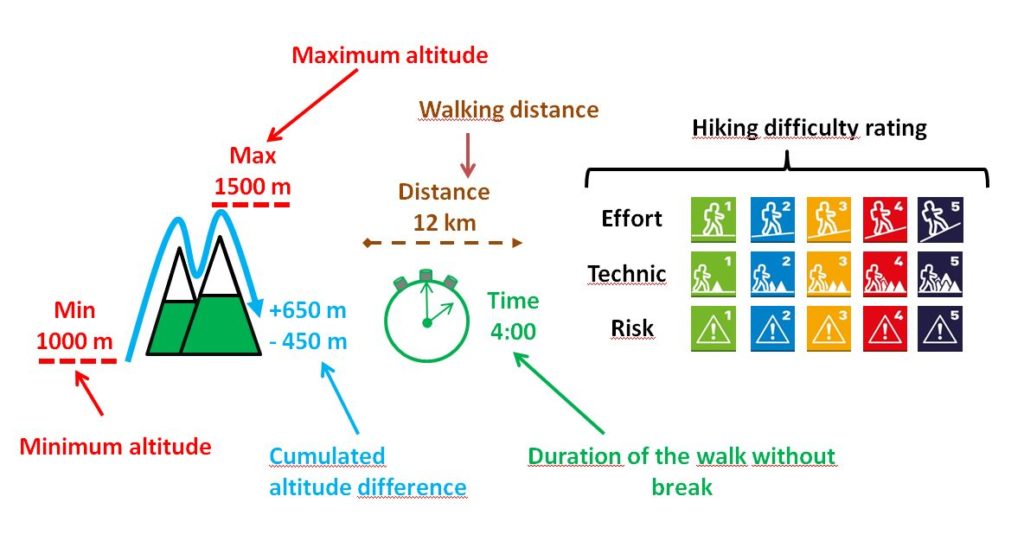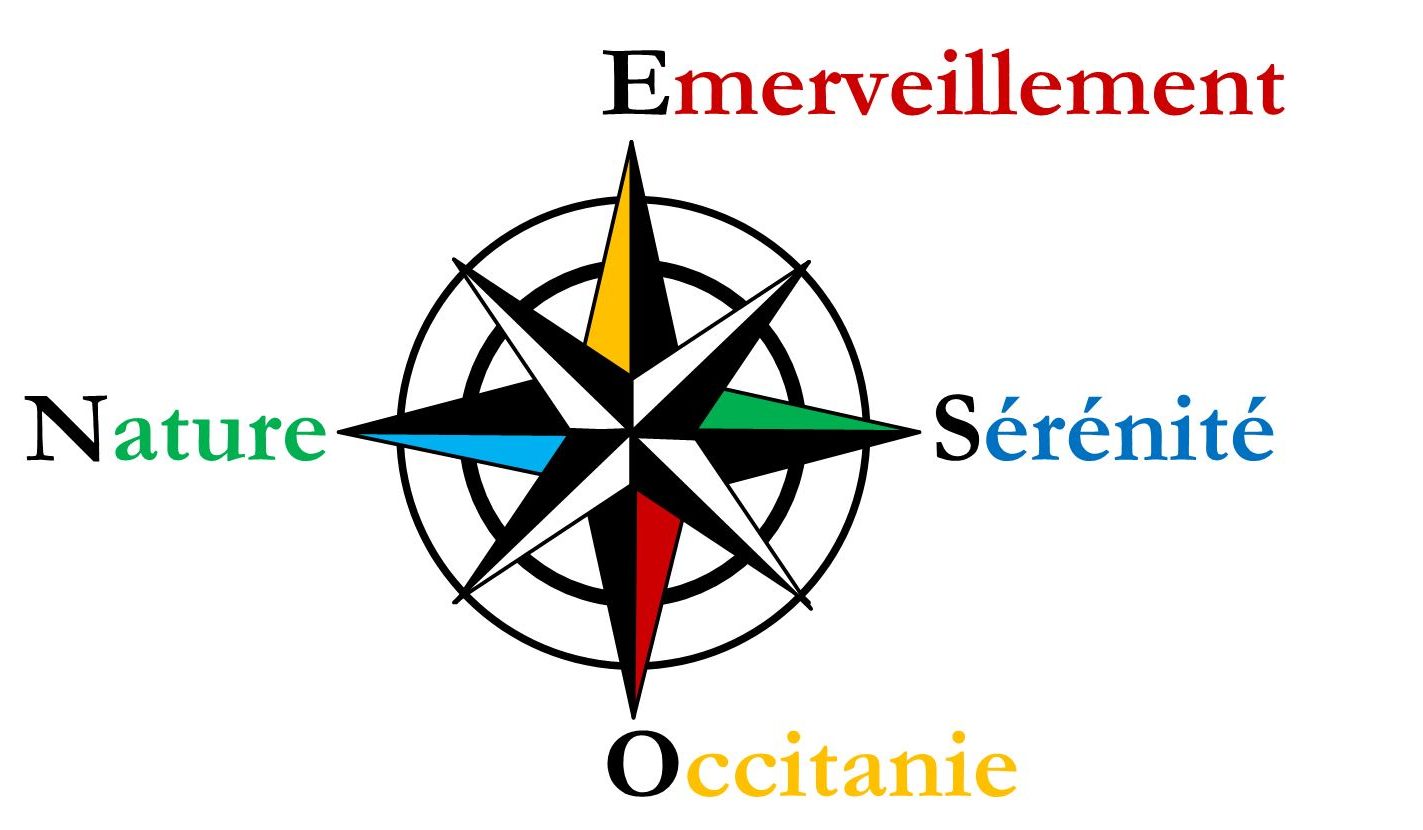
I use the convention proposed by the Féderation française de randonnée ( French hiking federation). It has the advantage of describing not only the level of physical effort but also the technical and risk level. The meaning is the following for each characteristic.
Effort Level
E1 : EASY
The hike is without physical difficulty. This level corresponds to walks.
E2 : QUITE EASY
The hike presents little physical difficulty. This level corresponds to walks and small hikes.
E3 : LITTLE DIFFICULT.
The hike requires some physical commitment, but it is still reasonable. This level corresponds to moderate hikes.
E4 : QUITE DIFFICULT
The hike presents difficulties and requires a certain physical commitment. This level corresponds to more sustained hikes.
E5 : DIFFICULT
Hiking is difficult and requires a lot of physical commitment. Warning ! This level corresponds to very sustained hikes
Technical Level
T1 : EASY
Track or portion of the track with no or almost no particular obstacle, none or almost no difficulty of progression (eg urban route). The laying of the foot is done flat, at place of the track.
T2 : QUITE EASY
Track or portion of a track with obstacles of a size less than or equal to the height of the ankle. The laying of the foot is done by looking for “flat” or “comfortable” areas of the support, quite easily identifiable.
T3 : LITTLE DIFFICULT.
Track or portion of a track having at least one obstacle of a size less than or equal to the height of the knee. The laying of the foot adapts to the irregularity of the support. The placement of the supports is done on the zones of better adhesion.
T4 : QUITE DIFFICULT
Track or portion of a track having at least one obstacle of a size less than or equal to the height of the hip. The laying of the foot (tip or heel) adapts to the general irregularity of the support. The use of poles is necessary for equilibibrium.
T5 : DIFFICULT
Track or portion of a track with at least one obstacle higher than the height of the hip. Crossings require the use of hands. Passages can or are secured by equipment. Sticks can be an embarassment to progression.
Level of Risk
R1 : VERY LOW
Very low level of risk of accidents (following a fall or slipping). The terrain configuration does not present any notable terrain accident. Exposure to danger can be described as “minor”. Injuries are possible but benign examples: white path in forest, greenway, urban routes with pedestrian facilities, rural routes without marked terrain accidents …).
R2 : QUITE LOW
Quite low level of risk of accidents (following a fall or slip). The terrain configuration may present some noticeable relief crashes. Exposure to danger remains limited, however. Injuries are possible but minor (examples: path with marked relief with possible presence of embankment, dislocation and possible sprains in case of a fall …)
R3 : LOW
Low risk of accidents (following a fall or slip). The terrain configuration presents notable relief accidents. Exposure to danger can be described as possible and proven (example: medium mountain route exposing the hiker on certain passages to serious injuries (fractures …).
R4 : FAIRLY HIGH
A fairly high level of risk of accidents (following a fall or slip). The terrain configuration presents marked relief accidents. Exposure to danger can be described as strong. The possibilities of serious injury are real and multiple. The danger of death is possible (example: mountain hiking itinerary with delicate passages with strong tilt, multiple exposed steep slopes, presence of rock bars …).
R5 : HIGH.
High level of risk of accidents (following a fall or slipping) .The terrain configuration presents very marked and large relief accidents. Exposure to danger can be described as “maximum”. The danger of death is certain in the event of a fall (example: alpine type route with total physical commitment, cliffs, multiple rock bars, routes that can be equipped …).
